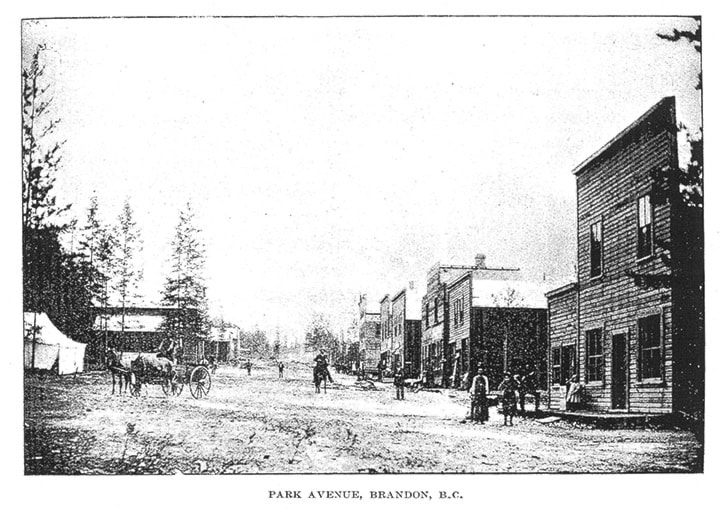Twentieth in a primarily alphabetical series on West Kootenay/Boundary place names
The Slocan City suburb of Brandon takes its name from its founder, William Henry Brandon (1857-fl. 1928), who came to New Denver from Ontario in the spring of 1892.
An experienced prospector, he held many claims, one of which resulted in his arrest in Guelph in 1894 on charges of embezzlement and conspiracy. He was alleged to have misappropriated funds belonging to his backers. However, a sympathetic story in the Nelson Tribune suggested it was all a misunderstanding, and upon his return to the area, “He had no difficulty whatever in convincing his friends both here and at Guelph that his mining partners were a little too hasty in bringing an action against him.” It’s not clear how the case was resolved.
The earliest newspaper mention of Brandon’s namesake neighbourhood was in the Nelson Miner of August 15, 1896, which stated that “The Two Friends and Howard Fraction have ore at Brandon ready for shipment to the smelter.” But it took until October 3 for the paper to clarify that Brandon and Slocan City were both at the foot of Slocan Lake.

A post office application was filed on July 28, 1896 but the inspector’s report two months later stated: “A post office at Slocan City having been authorized, there appears to be no necessity for one at Brandon.”
Only one photo of Brandon in its heyday is known to exist. Published in the British Columbia Mining Record of February 1897 (though probably taken the previous fall or summer) it shows a row of false-fronted buildings along Park Avenue. None of them still stand, for a few months later much of Brandon’s business district moved to Slocan en masse.
Despite this, a second post office application was submitted on April 24, 1897 and this time the inspector recommended approval. “The distance is fully a mile between the post office at Slocan City and the site of the proposed office at Brandon,” he wrote, though it was actually a lot closer. “There is a natural division between the two towns, which gives each a separate and distinct character … The establishment of a post office at Brandon will be a great convenience to the residents there.” However, it never opened.
Alfred Driscoll surveyed the Brandon townsite and deposited the plan with the land registry on October 3, 1898. It consisted of 11 blocks with two avenues, Park and Arlington, and three streets, Springer, Finch, and Falls. By 1902, 134 lots remained unsold and Nelson mayor/realtor/newspaper publisher John Houston was instructed to sell them off cheap, along with an unplatted portion of 50 to 60 acres.
While many overtures were made to amalgamate Slocan and Brandon, it never happened. Today you would hardly guess that Brandon is outside village limits but for the fact its streets have its name in parenthesis (pictured above).
By 1928, William Brandon lived in Winnipeg. His brother Daniel (1856-fl. 1911) built and operated the Selkirk Hotel in Silverton.
Previous installments in this series
Applegrove, Appleby, and Appledale revisited
